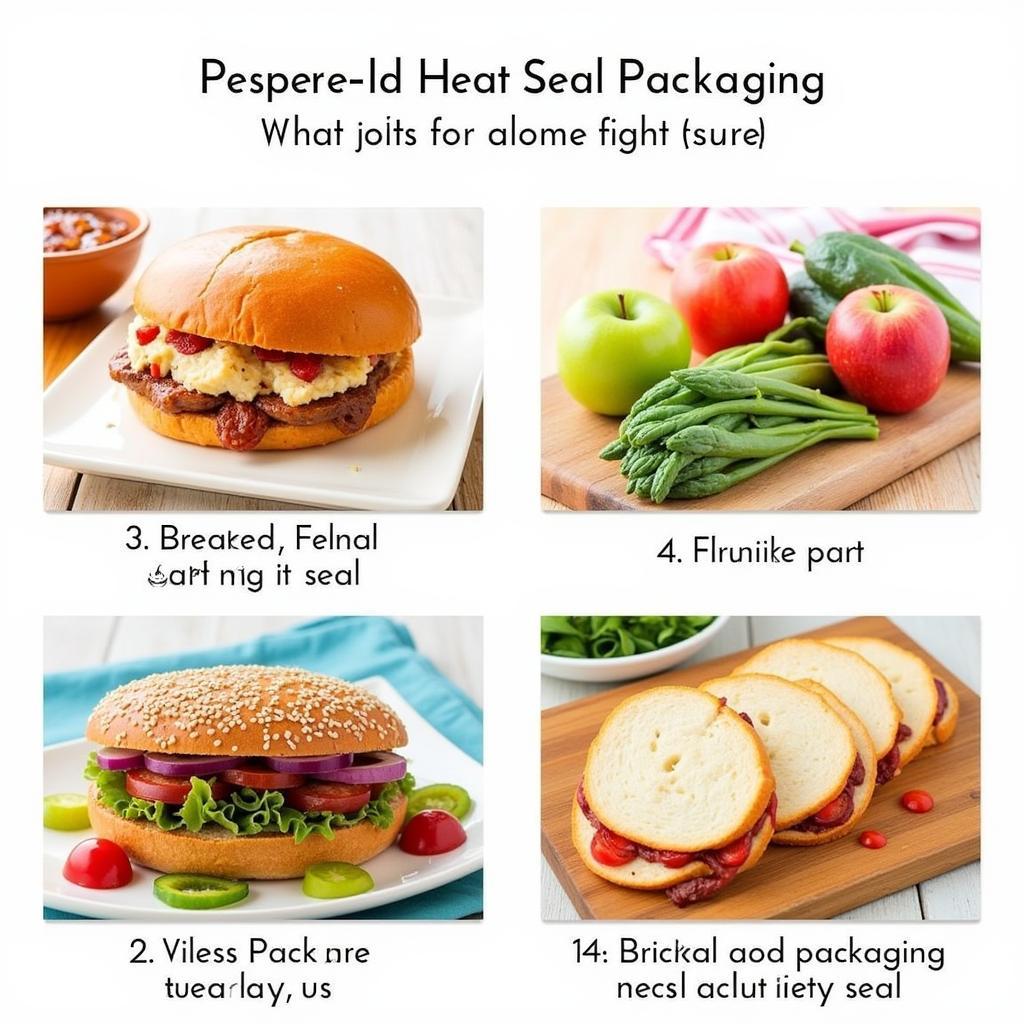Heat Seal Food Packaging is revolutionizing how we preserve and present food. From extending shelf life to enhancing brand appeal, heat sealing offers a wealth of benefits for businesses and consumers alike. This guide explores the ins and outs of heat seal food packaging, covering everything from its various applications to choosing the right heat sealer for your needs.
Understanding the Benefits of Heat Seal Food Packaging
Heat sealing creates an airtight and tamper-evident seal, protecting food from contamination, moisture, and oxygen. This significantly extends the shelf life of perishable goods, reducing food waste and saving money.  Heat Sealed Food Preservation Furthermore, heat sealed packaging offers a professional and attractive presentation, enhancing your brand image and attracting customers. For businesses looking for efficient and reliable packaging solutions, heat sealers offer a cost-effective and versatile option.
Heat Sealed Food Preservation Furthermore, heat sealed packaging offers a professional and attractive presentation, enhancing your brand image and attracting customers. For businesses looking for efficient and reliable packaging solutions, heat sealers offer a cost-effective and versatile option.
Types of Heat Seal Food Packaging
Heat seal food packaging comes in a variety of materials and forms to suit different needs. Common options include plastic films, pouches, trays, and containers. These materials are designed for compatibility with different heat sealers and food types. From disposable food trays with lids for ready-to-eat meals to flexible pouches for snacks, there’s a heat seal solution for every product. Choosing the right type of packaging depends on factors such as the type of food, storage requirements, and desired presentation.
Choosing the Right Heat Sealer for Your Needs
Selecting the appropriate heat sealer is crucial for effective heat seal food packaging. Several factors should be considered, including the volume of packaging, the type of material being sealed, and the desired features. Impulse sealers are ideal for low-volume sealing of thin materials, while constant heat sealers are better suited for thicker materials and higher production rates. For optimal preservation of oxygen-sensitive foods, consider using a vacuum sealer in conjunction with oxygen absorber for food storage.
Heat Sealing Best Practices
Achieving a perfect seal every time requires proper technique and attention to detail. Ensure the sealing area is clean and dry to prevent weak seals. Correctly setting the temperature and pressure of the heat sealer is also essential for achieving optimal results. “A good seal is crucial not only for preserving food but also for maintaining the integrity of your brand,” says John Peterson, Packaging Specialist at SealRight Solutions. Testing the seal’s strength after sealing is always recommended.
Heat Seal Food Packaging for Businesses
Heat seal food packaging offers numerous advantages for businesses of all sizes. It ensures product freshness, enhances brand appeal, and streamlines packaging operations.  Business Using a Heat Sealer For businesses involved in food packaged on-site for retail sale in an operation, heat sealing provides a professional and efficient solution for packaging products directly at the point of sale. “Heat sealing has transformed our packaging process, allowing us to deliver fresh, high-quality products to our customers,” shares Maria Rodriguez, owner of Fresh Bites Deli. Investing in a food tray sealing machine can significantly improve a business’s packaging efficiency.
Business Using a Heat Sealer For businesses involved in food packaged on-site for retail sale in an operation, heat sealing provides a professional and efficient solution for packaging products directly at the point of sale. “Heat sealing has transformed our packaging process, allowing us to deliver fresh, high-quality products to our customers,” shares Maria Rodriguez, owner of Fresh Bites Deli. Investing in a food tray sealing machine can significantly improve a business’s packaging efficiency.
Conclusion
Heat seal food packaging offers a reliable and versatile solution for preserving and presenting food products. By understanding the different types of heat sealers and packaging materials available, you can choose the best option for your specific needs. Implementing heat sealing can significantly enhance product quality, extend shelf life, and elevate your brand image. With its numerous benefits, heat seal food packaging is a valuable investment for businesses and consumers alike.
FAQs
- What are the benefits of heat seal food packaging? * Extends shelf life, protects from contamination, enhances presentation.
- What types of food can be heat sealed? * A wide variety, from dry goods to prepared meals.
- How do I choose the right heat sealer? * Consider volume, material type, and desired features.
- What are some common heat sealing mistakes? * Using incorrect temperature/pressure, sealing dirty surfaces.
- How do I maintain my heat sealer? * Regular cleaning and proper storage.
- What is the difference between impulse and constant heat sealers? * Impulse sealers use pulses of heat, while constant heat sealers maintain a constant temperature.
- Where can I purchase heat seal food packaging supplies? * From packaging suppliers or online retailers.
Need support? Contact us at Phone: 02437655121, Email: minacones@gmail.com or visit our address: 3PGH+8R9, ĐT70A, thôn Trung, Bắc Từ Liêm, Hà Nội, Việt Nam. We have a 24/7 customer support team.